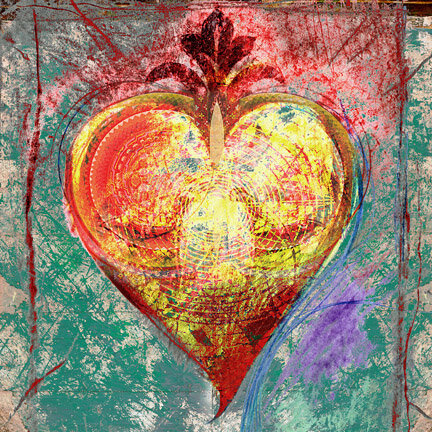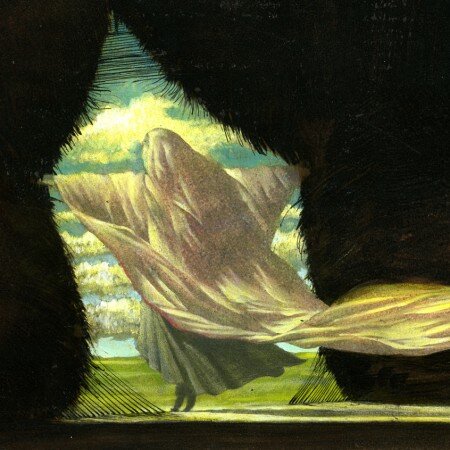There are times in our lives when we can become stuck or fearful about accomplishing some goal or moving forward with a project, or even getting out of bed in the morning. There are many tools we can use to overcome these roadblocks, from reading or listening to self help books, or spending time with a life coach or therapist. For some people drugs are an outlet. Then we have mentors like Lester Fu who helps people with hypnotism.
I met Lester in Santa Fe and experienced a hypnotism session with him to understand the power behind this mind altering method. I learned a lot and was so impressed, I now offer two recorded video sessions with Lester in the online Artist As Brand online workshop! He took time out of his busy schedule to chat with me about this unique talent.
Tell us a little bit about yourself and how you got interested in Hypnotism?
Growing up, like many people, the only thing I learned about emotions was to hold them back. However, that’s not the way to go because they come out in one way or another. In order to get more in touch with myself, I was attracted to theater, philosophy, and psychology from a very young age. Some of the places that I have had the privilege to go to and learn from are Royal Academy of Dramatic Arts, St. John’s College, and UC Berkeley.
I got into hypnosis when I was looking for something to help myself. I did talk therapy, and worked at a psychology lab in UC Berkeley. Both experiences were fun and enriching. However, at one point I felt like I ran out of things to say in talk therapy - it’s like I’m still processing things inside, but I don’t know how to talk about it. And the work at the psychology lab was a little too academic for me.
So I searched for other things to help myself, and that’s when I found hypnosis. Despite the fact that I was very skeptical, I was able to connect with my subconscious mind in hypnosis, and got in touch with what I didn’t know how to talk about in therapy. It was a very cathartic experience involving a decent amount of tears and nose bubbles and some really good emotional release.
Now I work as a professional hypnotist focusing on helping people feel more confident and secure in their relationships by releasing anxiety, fear, insecurity, and self-doubt.
What would you say are the three top benefits of hypnotism?
Connect with your subconscious mind to gain more clarity (e.g. help you get in touch with your inner voice and what you truly want)
Tapping into your internal wisdom for insights and guidance (e.g. access the answers that you already have inside)
Creating powerful positive changes in a relatively short amount of time (e.g. overcome insecurity and feel more confident)
How can this practice benefit those creating their own art businesses?
In general, it can help with unleashing your creativity, getting more aligned with your “why”/ heart virtue, help you remove blockages and feel more confident when it comes to promoting your work.
Are there negative or fear based preconceived ideas to hypnotism?
Yes, and I think we have all heard of the stereotype of “quacking like a duck”/“clucking like a chicken”. Most of the misconceptions about hypnosis come from the fictional idea of “mind control”, whereas in reality hypnosis is more like a guided meditation for your subconscious mind - you are aware of what’s happening and you are actively participating in the process.
I have not experienced any negative results from hypnosis, apart from occasionally (actually fewer than you think) people fall asleep during the session and I need to find creative ways to wake them up and continue the session.
Are there cultural differences in the context of how hypnotism works?
For cultures that are more open to internal reflection and spirituality, hypnosis is a very good method to help people access their inner mind. It may take some more time at the beginning to prepare and explain to people - who are from more analytical cultures - in order to get on the same page, and have a good and informed experience with hypnosis.
What are the biggest lessons you have learned from practicing hypnotism?
There’s a lot but here are 3 of them:
A huge part of our experience slips from our conscious awareness. Curiosity is the key to unlock a massive amount of treasure within ourselves.
Change can often happen faster than we think - it doesn’t have to take years or even a lifetime. It is essentially a deep learning/ re-learning process for the subconscious mind.
There’s so much more within us, and there’s so much more we are capable of, that we may or may not be completely aware
Do you ever hypnotize yourself? If so can you share some of that experience?
I go into hypnosis myself very often. We naturally enter different states of attention and awareness throughout the day. For example, before we are fully awake in the morning, or before we are fully asleep at night - we tend to have a very “hypnotic” experience and it’s fun to pay attention and play with it. Also, when meditating or doing things of that kind, we enter a similar state to hypnosis.
Personally, I don’t necessarily distinguish these experiences from hypnosis. If anything I play with them and notice what my mind may be revealing to me as I do that.
Everyone can learn to go into hypnosis/trance/hypnotic states/theta brainwave state intentionally, just like how everyone can learn to meditate.
Any final pearls of wisdom on how hypnotism can become a daily tool for success?
Knowing our mind can change and is changing all the time opens up more doors and reveals more possibilities than we could think.
Thank you Lester, for your insights and the benefits of hypnotism. I learned even more with this interview! You may work with Lester directly from anywhere in the world, simply contact him at his website. Otherwise sign up for the Artist As Brand online workshop and experience Lester in two video sessions. Enjoy!


















